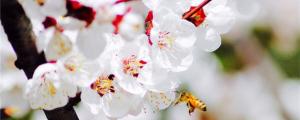How to Fertilize a Newly Planted Tree
Planting a new tree is an exciting and rewarding experience, but in order to ensure that it grows strong and healthy, it's important to provide it with proper fertilization. Here are some tips on how to fertilize a newly planted tree:
1. Choose the Right Fertilizer
The first step in fertilizing a newly planted tree is to choose the right type of fertilizer. Look for a slow-release, balanced fertilizer that contains equal amounts of nitrogen, phosphorus, and potassium. The nitrogen will help the tree grow strong and produce healthy leaves, while the phosphorus and potassium will encourage root development and overall growth. You can also look for fertilizers that contain other beneficial nutrients, such as calcium or magnesium.
2. Apply the Fertilizer Correctly
Once you have chosen the right fertilizer, it's important to apply it correctly. Start by digging a small trench around the base of the tree, about six inches away from the trunk. This will help to prevent the fertilizer from burning the tree's roots. Next, sprinkle the fertilizer into the trench, using a garden trowel to spread it evenly. Be careful not to get any fertilizer on the tree's trunk or leaves, as this can also cause damage.
3. Water the Tree After Fertilizing
After you have applied the fertilizer, it's important to water the tree thoroughly. This will help to ensure that the fertilizer reaches the tree's roots and is absorbed properly. Water the tree slowly and deeply, allowing the water to soak into the soil. Be careful not to overwater the tree, as this can also cause damage.
4. Fertilize Regularly
Fertilizing a newly planted tree is just the beginning. In order to ensure that the tree continues to grow strong and healthy, it's important to fertilize it regularly. How often you fertilize will depend on the type of tree and the fertilizer you are using, so be sure to read the instructions carefully. In general, it's a good idea to fertilize once a year in the spring or fall.
5. Watch for Signs of Overfertilization
While fertilizing a newly planted tree is important, it's also possible to overdo it. Overfertilization can cause damage to the tree's roots and leaves, and can even kill it. Watch for signs of overfertilization, such as yellowing leaves, stunted growth, or a brittle trunk. If you notice any of these signs, stop fertilizing the tree and take steps to correct the problem.
By following these tips, you can help to ensure that your newly planted tree grows strong and healthy. Remember to choose the right fertilizer, apply it correctly, water the tree afterwards, fertilize regularly, and watch for signs of overfertilization. With a little bit of care and attention, your tree will thrive for many years to come.

 how many times do yo...
how many times do yo... how many planted tre...
how many planted tre... how many pine trees ...
how many pine trees ... how many pecan trees...
how many pecan trees... how many plants comp...
how many plants comp... how many plants can ...
how many plants can ... how many plants and ...
how many plants and ... how many pepper plan...
how many pepper plan...





























